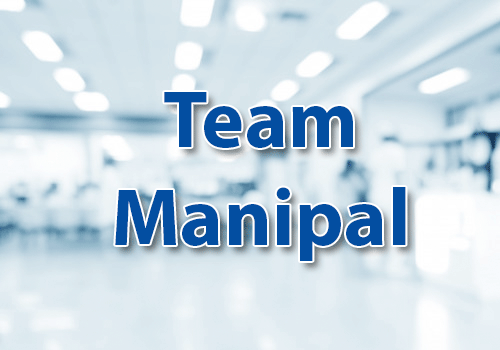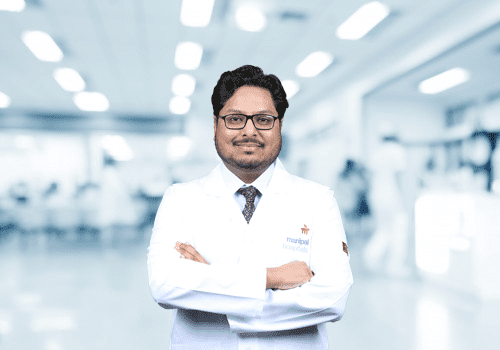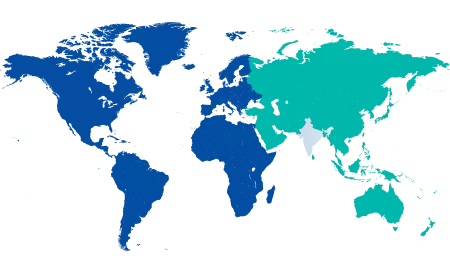
Scoliosis is a sideward bend of the spine which usually occurs in children, but can also sometimes affect adults. A normal spine is curved on the top of the shoulder and at the lower back. When a person is affected with scoliosis, his/her spine is bent sideways in a “C” or an “S” shape. Even so, it is actually a complex three-dimensional condition. When there is no specific cause, it is referred to as Idiopathic Scoliosis, which is the most common type of scoliosis, constituting about 80% of the cases. It can occur due to the birth defect in the bones of the vertebrae, in which case it is called Congenital Scoliosis, or it may be neuro-muscular, where patients having problems with the nerves and the muscles develop paralysis of hands and legs and also a bend in the pelvic muscles. Another type of scoliosis is Degenerative, where elderly people get a bend in the back due to aging.
Symptoms of Scoliosis:
The common signs and symptoms of scoliosis include:
- Uneven shoulders, i.e. one shoulder is higher than the other
- Clothes fit awkwardly or unevenly
- Visibly curved spine
- Uneven waist
- Prominent rib cage
- One-shoulder blade or hip appearing more prominent than the other
- Back pain
- Difficulties in breathing due to reduced area in the chest for lungs to expand
Causes of Scoliosis:
The exact causes of scoliosis are unknown. It may be caused due to the following factors:
- Injuries or infections of the spine
- Abnormal development of the spinal bones in the womb
- Neuromuscular conditions such as cerebral palsy (a condition associated with brain damage) or muscular dystrophy ( a genetic condition causing muscle weakness)
- Weakening of the spine due to aging
Diagnosis:
- Physical Examination: The doctor will examine your back to check for spine curvature and whether your shoulders and waist are symmetric.
- X-ray: An orthopedic specialist may take an x-ray to help determine the shape, direction, location and angle of the curve.
- Imaging: Magnetic Resonance Imaging (MRI) uses magnetic waves to get a clear picture of the affected region. CT Scanning is also done to get a 3-dimensional picture and assess the shape, direction, location and angle of the curve.
Treatment:
The treatment of scoliosis depends on the severity of the curvature of the spine and certain other factors like age, physical condition, associated symptoms such as back pain etc. The treatment options consist of three main categories:
- Observation
- Nonoperative / Non-surgical treatment
- Surgical Treatment
Observation is usually an appropriate treatment option for small spinal curves, or which are at a low risk of worsening. Most of the idiopathic cases are mild and only require observation. Observation is typically done by the doctor about two to three times a year until the person reaches full skeletal maturity.
However, if the curve progresses beyond 25 to 40 degrees and if considerable skeletal growth is remaining, the doctor might recommend bracing in order to stop further progression of the curve. The brace is commonly made of plastic and is made to conform to the body. Full-time bracing involves wearing them for 16-23 hours a day, and removing them only for bathing and exercising. Nighttime braces are to be worn at least 8 hours a night, and these braces use hyper-corrective forces which put the body out of normal balance and cannot be realistically applied while performing daily activities. The effectiveness of a brace is directly proportional to the number of hours a day it is worn. Braces are discontinued after the bones stop growing.
Surgery is used to rectify curves in skeletally mature bones greater than 45 degrees or for those curves which haven’t responded to bracing. Spinal fusion is the most common surgery used to correct severe scoliosis. It is an operation that causes the vertebrae in the lower back to grow together. The aim of spinal fusion is to ensure that the two vertebrae fuse together so there is no longer any motion between them. Surgery is done to reduce the deformity and help the person stand up straighter. The doctor will also try to maintain as much of the spine’s natural curvature as possible. If the condition is severe, but the person hasn’t stopped growing fully, rods are inserted to allow for continued growth, and these are adjusted periodically to account for the growth.
Although scoliosis surgeries are safer today, there are still risks associated with it. The most prominent risk is paraplegia or the loss of movement and feeling in the lower body and legs. This risk can be monitored through different methods. These involve small electrical impulses given in the legs and read in the brain. These signals should remain constant throughout the surgery. If they begin to slow at any point, it can indicate a problem to the spinal cord. Other risks include excessive blood loss, infection, cerebrospinal fluid leak etc.
Apart from the above solutions, there are many home remedies that can be followed for scoliosis. These include physical therapy, massages, stretches and exercises, and gentle chiropractic practices to provide relief.






















 2 Min Read
2 Min Read















